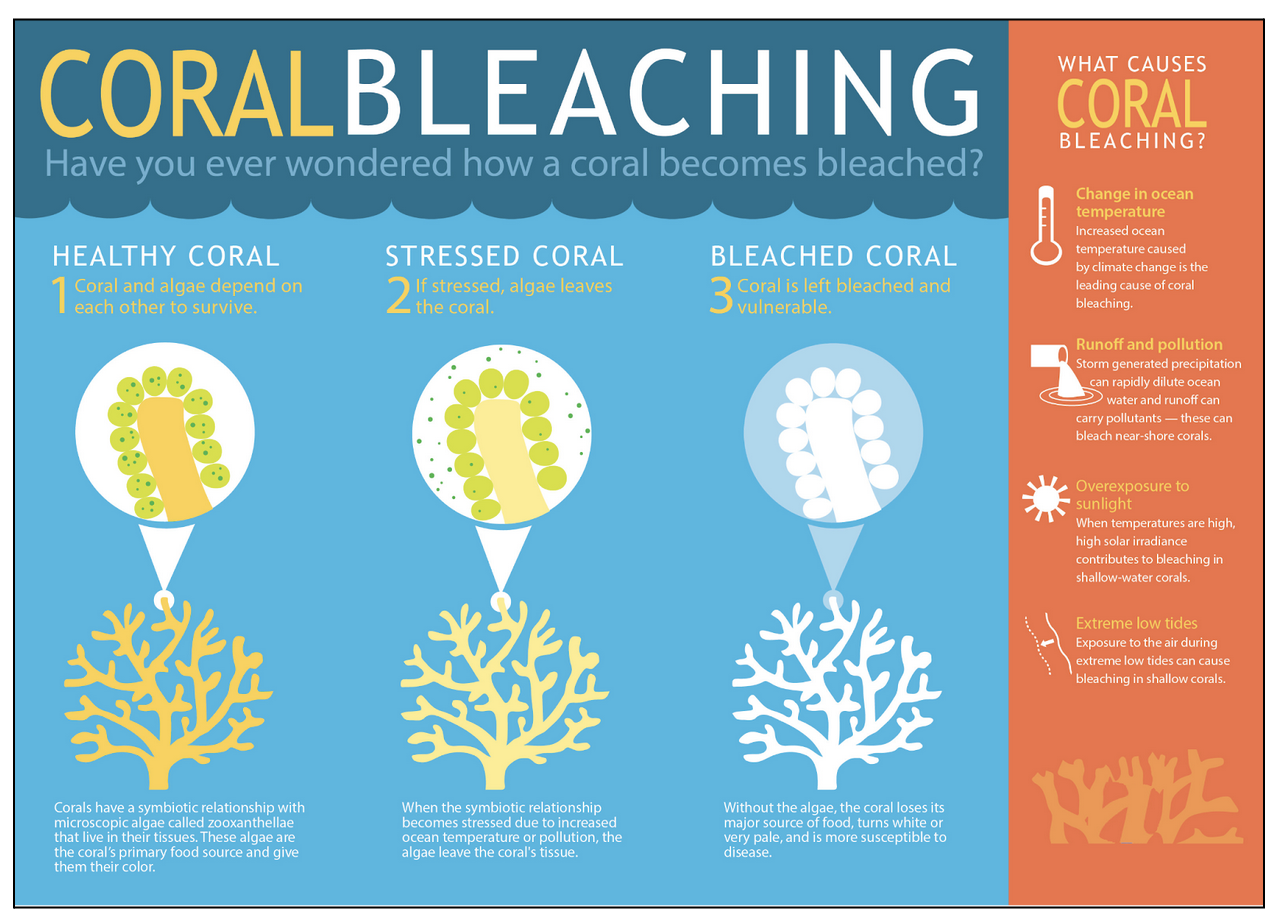GS Paper III
News Excerpt:
The ICAR-Central Marine Fisheries Research Institute (CMFRI) has found that coral reefs in the Lakshadweep Sea have undergone severe bleaching due to prolonged marine heatwaves since October 2023.
What are coral reefs?
- Coral reefs are large underwater structures composed of the skeletons of colonial marine invertebrates called coral.
- The coral species that build reefs are known as hermatypic, or "hard," corals because they extract calcium carbonate from seawater to create a hard, durable exoskeleton that protects their soft, sac-like bodies.
- Other species of corals that are not involved in reef building are known as “soft” corals.
- These types of corals are flexible organisms often resembling plants and trees and include species such as sea fans and sea whips.
- Each individual coral is referred to as a polyp.
- Coral polyps live on the calcium carbonate exoskeletons of their ancestors, adding their own exoskeleton to the existing coral structure.
- As the centuries pass, the coral reef gradually grows, one tiny exoskeleton at a time, until they become massive features of the marine environment.
- Corals are sessile animals, i.e. they permanently attach themselves to the ocean floor.
- Almost all of Lakshadweep’s islands are coral atolls, with their soil largely derived from corals, and extant coral reefs around them.
What is coral bleaching?
- When corals are stressed by changes in conditions such as temperature, light, or nutrients, they expel the symbiotic algae living in their tissues, causing them to turn completely white.
- Corals expel the microscopic algae which live in their tissues, and, in simple terms, produce food for them.
- Without these algae, corals’ tissues become transparent, exposing their white skeleton.
- Bleached corals are not dead, but run the risk of starvation and disease. According to experts, without their algae, corals can survive for about two weeks.
What triggers coral bleaching?
- The leading cause of coral bleaching is climate change.
- Coral may bleach for other reasons, like extremely low tides, pollution, or too much sunlight.

Coral bleaching in Lakshadweep:
- Lakshadweep has been gripped by marine heat waves since October 2023 and coral bleaching was spotted only last week.
- If the water does not cool down, the bleaching can eventually lead to the death of Lakshwadeep’s corals.
- Lakshadweep Sea has previously seen coral bleaching events in 1998, 2010 and 2015, but the scale of the current one is unprecedented.
Coral Bleaching Stress indicator:
- Scientists use the Degree Heating Week (DHW) indicator to measure accumulated heat stress in an area over the past 12 weeks, by adding up any temperature that exceeds the bleaching threshold during that time period.
- DHW is calculated in celsius-weeks.
- The DHW indicator is an estimate of thermal stress of corals and a strong predictor of coral bleaching.
- DHW is a widely used indicator and can be estimated from long term temperature logging and remote sensed satellite data.
How hot is the Lakshadweep Sea right now?
- Corals experience thermal stress when sea surface temperatures exceed 1 degree celsius above the maximum mean temperature.
- This stress worsens if the high temperatures persist over a period of time.
- DHW values above 4 degree celsius-weeks cause significant coral bleaching — a threshold that Lakshadweep has now crossed.
- However, Lakshadweep Sea has been consistently experiencing temperatures 1 degree celsius above the norm since October 27, 2023.
- Apart from excessive atmospheric heat (caused due to Global Warming), shifts in ocean currents also lead to unusually high water temperatures.
Are marine heat waves and coral bleaching a problem for Lakshadweep alone?
- A 2022 study by Indian Institute of Tropical Meteorology (IITM), Pune, had reported that marine heatwaves are increasing in the Indian Ocean.
- The increase in marine heatwaves is primarily due to the rapid warming in the Indian Ocean and strong El Niños.
- Earlier, these heat waves used to be rare in the tropical Indian Ocean, but have now become an annual affair.
- The western Indian Ocean region experienced the largest increase in marine heatwaves at a rate of about 1.5 events per decade, followed by the north Bay of Bengal at a rate of 0.5 events per decade.
- During 1982–2018, the western Indian Ocean had a total of 66 events while the Bay of Bengal had 94 events.
- An underwater survey showed that 85% of the corals in the Gulf of Mannar near the Tamil Nadu coast got bleached after the marine heatwave in May 2020.
Local impact of heat waves and Coral bleaching in Lakshadweep:
- The heat waves threaten livelihoods of coastal communities, tourism and fisheries sectors
- It also damages the critical marine habitats, including seagrass meadows.
- Similar to corals, seagrass meadows, kelp forests are experiencing detrimental impacts such as impaired photosynthesis, reduced growth, and hindered reproductive functions due to the heatwaves.
- Lakshadweep is formed by coral reefs and hence the health of reefs are important for the very structure of the islands.
- Death of coral may also lead to accumulation of organic matter, preventing the formation of corals later.
Central Marine Fisheries Research Institute:
|
